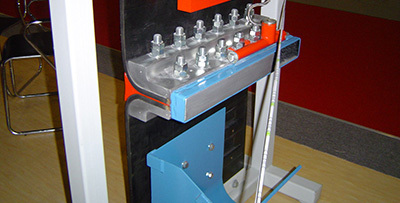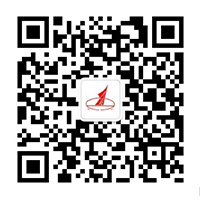Technical Services
Hezi technology focuses on the research and development of "rapid seamless conveyor belt joint sleeve" innovative technology project

TECHNICAL SERVICE
Technical Services

Detailed introduction
Brief introduction of conveyor belt characteristics
Release time:
2012-12-17
Product structure: This product uses multi-layer hanging rubber cotton canvas as the skeleton, and the rubber material with good surface coverage is made by vulcanization.
1. Conveyor belts are widely used in cement, coking, metallurgy, chemical, steel and other industries where the transportation distance is short and the transportation volume is small.
Product structure: This product uses multi-layer hanging rubber cotton canvas as the skeleton, and the rubber material with good surface coverage is made by vulcanization.
Conveyor belt series products include ordinary cotton canvas conveyor belts, nylon (NN) conveyor belts (divided into NN-100, NN-150, NN-200, NN-250, NN-300, NN-350, NN-400 type), polyester (EP) belt (divided into EP-100 type, EP-150 type, EP-200 type, EP-250 type, EP-300 type, EP-350 type, EP-400 type) , Large inclination (wave-shaped ribs) conveyor belt, skirt partition conveyor belt, endless conveyor belt, pattern conveyor belt {Because of different materials and different conveying angles, the pattern shape and height are also different. Commonly used pattern conveyor belt varieties such as: herringbone pattern conveyor belt (herringbone conveyor belt includes convex and concave herringbone conveyor belt), eight-shaped pattern conveyor belt, herringbone pattern conveyor belt, U-shaped pattern conveyor belt, cylindrical Pattern conveyor belt, pit pattern conveyor belt, etc., or designed according to user requirements, water stop belt, PVC or PVG whole core flame retardant belt, etc.; and can provide various special performance conveyor belts (general flame retardant conveyor belt, resistant Heat-resistant conveyor belt, burn-resistant conveyor belt, high wear-resistant conveyor belt, acid-resistant conveyor belt, alkali-resistant conveyor belt, cold-resistant conveyor belt, oil-resistant conveyor belt, high-temperature conveyor belt, high-strength conveyor belt and food conveyor belt).
2. Conveyor belts are divided into many specifications and models according to the use environment and requirements:
1. According to the size of the transportation volume, it is divided into: B200, B300, B400, B500, B600, B650, B800, B1000, B1200, B1400, B1600, B1800, B2000 and other common models (B stands for width, in millimeters).
2. According to the different use environments, it is divided into ordinary conveyor belts and includes (ordinary type, heat-resistant type, flame-retardant type, burn-resistant type, acid and alkali resistant type, oil-resistant type), heat-resistant conveyor belt, cold-resistant conveyor belt, and Acid-base conveyor belt, oil-resistant conveyor belt, food conveyor belt and other models. Among them, the minimum thickness of cover rubber on ordinary conveyor belts and food conveyor belts is 3.0mm, and the minimum thickness of lower cover rubber is 1.5mm; the minimum thickness of cover rubber on heat-resistant conveyor belts, cold-resistant conveyor belts, acid and alkali resistant conveyor belts, and oil-resistant conveyor belts is 4.5 mm, the minimum underlaying glue is 2.0mm. According to the specific conditions of the use environment, the thickness of the upper and lower cover rubber can be increased by 1.5mm.
3. According to the tensile strength of the conveyor belt cloth layer, it is divided into ordinary conveyor belt and powerful conveyor belt. The powerful canvas conveyor belt is divided into nylon conveyor belt (NN conveyor belt) and polyester conveyor belt (EP conveyor belt).
band).
Supplementary note: The strong layer of the strong conveyor belt is polyester canvas (EP), which is divided into EP100, EP150, EP200, EP250, EP300, EP350, EP400, etc.; it can also be nylon canvas (NN) , Can be divided into NN100, NN150, NN200, NN250, NN300, NN350, NN400, NN450, NN500, etc.
⑴. Ordinary conveyor belts (including high-strength nylon conveyor belts) products implement GB7984-2001 standards.
Ordinary conveyor belt This conveyor belt uses fiber fabric as the core, and uses general rubber as the covering material. The surface is smooth and flat (Figure 1. The core is layered or woven by fibers such as cotton, nylon, polyester or vinylon). Overall fabric. Cotton fiber is the earliest core material used, easy to bond with rubber, and its strength is slightly improved in wet state, but the breaking strength is low (mostly around 56 N/(mm·layer)), and its anti-corrosion and mildew resistance are poor. The use is decreasing. Nylon fiber fabric has been used as the core material in the late 1950s, and has become the largest amount. The strength of nylon fiber is as high as 700 N/(mm·layer), water resistance, corrosion resistance, and bending fatigue resistance; But the elastic elongation is relatively large. The properties of polyester fiber are similar to nylon fiber, and the elastic elongation is only half of that of nylon fiber when used. It is a promising material. Vinylon fiber has a strength of 200 N/(mm·layer) ), elastic elongation is smaller than nylon fiber, easy to bond with rubber, good heat resistance, but the strength is reduced by 10-25% when wet, and it is only used in a few countries such as China and Japan. It can only be used when weaving a core With one fiber, two fibers can also be blended or interwoven.
Original author: Hangzhou efforts Rubber Products Co., Ltd.
Previous Page
Next Page
Previous Page
Next Page





























